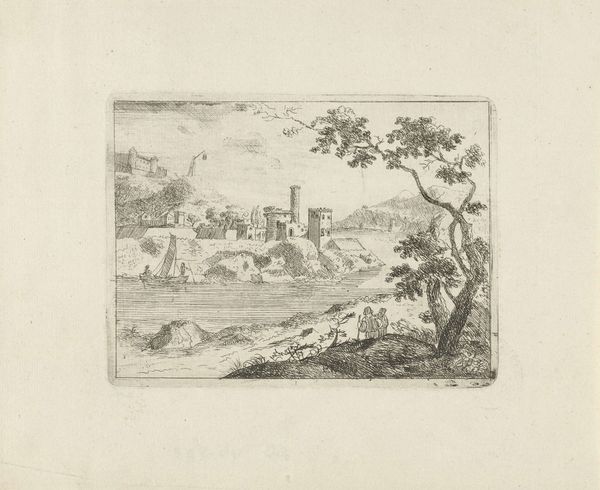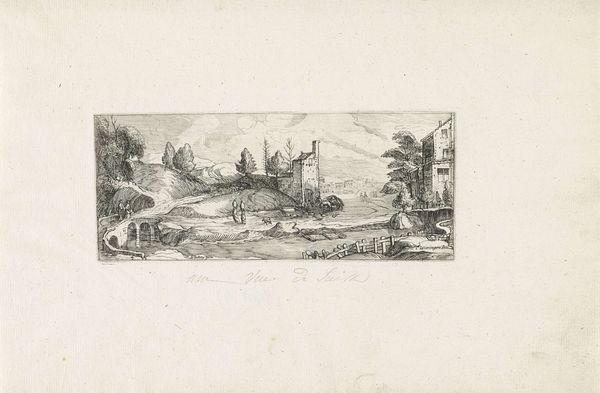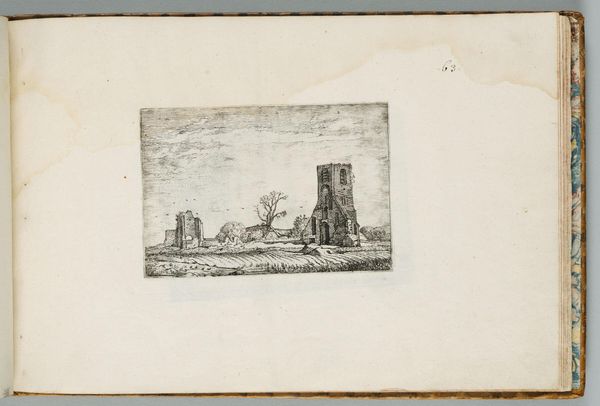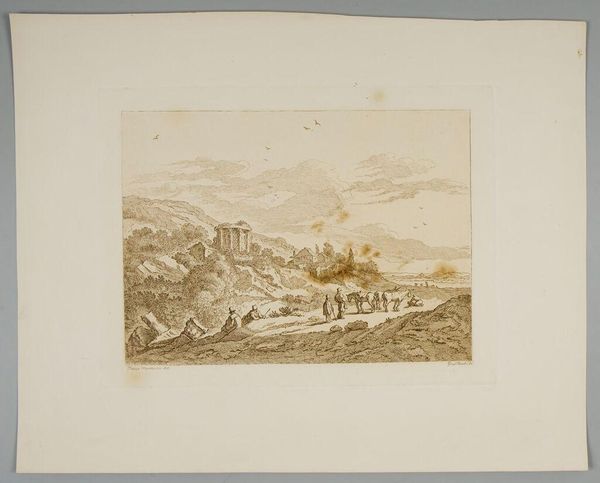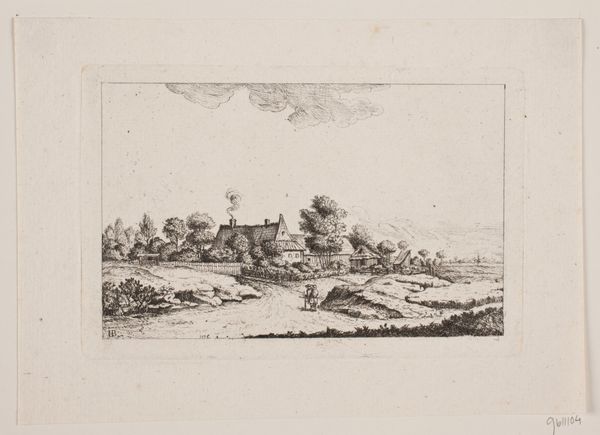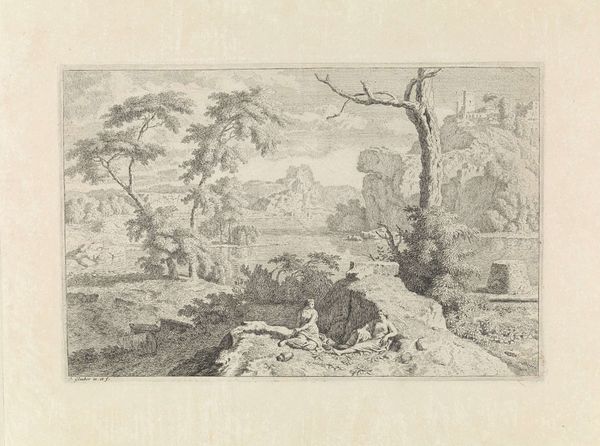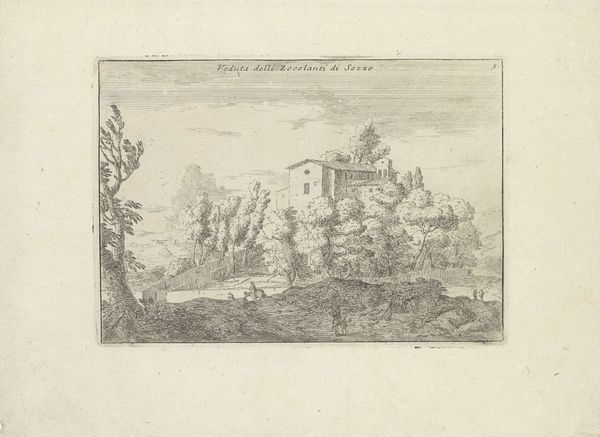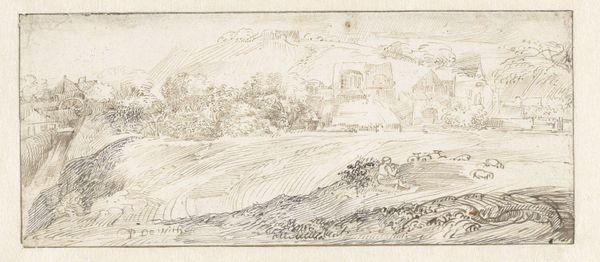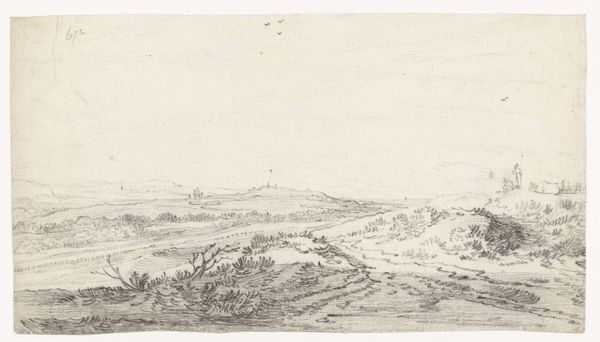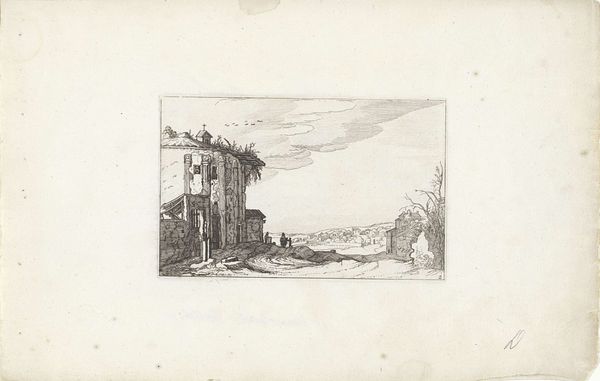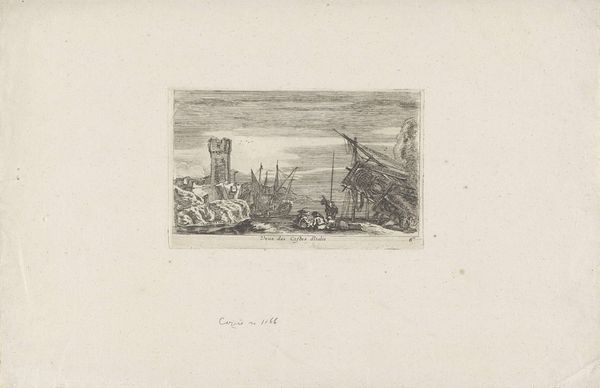
print, etching
#
baroque
# print
#
etching
#
landscape
#
italian-renaissance
Dimensions: height 134 mm, width 192 mm
Copyright: Rijks Museum: Open Domain
Curator: Let's discuss Paolo Anesi's "Landschap met de Ponte Salario" from around 1725, housed here at the Rijksmuseum. It’s a fascinating etching from the Italian Renaissance. Editor: My first impression is one of understated strength. The delicate etching work belies the rugged Roman countryside depicted. The scene feels strangely timeless and solitary. Curator: Absolutely. This print reveals a lot about how the Italian landscape was being perceived and presented. Anesi, situates this landscape within an ongoing dialogue of the relationship between antiquity and its contemporary era. What does the Ponte Salario signify, for instance, politically? Editor: Well, the bridge itself is more than just stone and mortar, it is a vital symbolic link, physically connecting regions, but also connecting the present to a very storied past, both Romes past but more widely. The architecture evokes strength, longevity. Consider the symbolism inherent in bridges as pathways. Curator: Yes, bridges act as major access points—the control over a place becomes tied to this very structure. It brings up questions of power dynamics. It invites consideration of who is allowed access and who is not, and on whose terms? Editor: And I’m struck by how the landscape itself mirrors that power. Notice how the terrain rises toward these dominating towers? It reinforces the power dynamic, but it could also highlight its potential fragility – built precariously close to erosion, the inevitable power that the natural world possesses. Curator: That’s a really important point about the precariousness. When we see pastoral scenes we tend to forget their connections to political structures and the communities which subsist nearby. To appreciate this landscape requires an acknowledgement that access, then and now, continues to structure the social dimensions of a landscape. Editor: In a way, Anesi's rendering speaks to the lasting relevance of these archetypal forms – the bridge, the tower. Their inherent symbolism seems to resonate regardless of the century or political climate. Curator: Indeed. Analyzing Anesi’s piece prompts reflections on themes of power, place and representation and also how deeply embedded power relations are into our very understanding and experience of the land around us. Editor: This has highlighted how landscapes persist as powerful symbols, loaded with cultural weight and enduring appeal, transcending their physical reality.
Comments
No comments
Be the first to comment and join the conversation on the ultimate creative platform.
